- Premium features included
- No hidden costs or usage limits
- Scale from startup to enterprise


I started using Mailjet back in 2019 for client work, and it’s become something pretty interesting. The real-time co-editing was what caught my attention first—you know how email approvals usually go, with seventeen versions floating around? This fixes that mess.
The free tier gives you 6,000 emails monthly (though you’re capped at 200 per day), plus around 1,500 contacts. That’s enough to test things properly. I don’t always use the drag-and-drop editor since I prefer coding templates, but when deadlines hit, it’s saved me more than once.
Mailjet came out of France in 2010 as an email marketing platform that works for both marketers and developers. You get access to campaign tools, automation, their MJML framework for responsive emails, plus transactional capabilities through REST API or SMTP, and webhooks for tracking everything.
Sinch bought them in 2021 (through the Pathwire acquisition that included Mailgun and Email on Acid), so now they’re part of a bigger communications platform.
I use it for everything from basic newsletters to automated sequences and transactional emails—all in one place with decent segmentation and analytics. The platform handles both marketing and transactional needs, which simplifies things for businesses that don’t want multiple providers.
After working with Mailjet for a few years, I’ve found that the campaign tools handle most customer needs pretty well. The MJML-based editor creates responsive emails automatically—no more debugging broken layouts at 2 AM.
But what really won me over was seeing three people edit the same email campaign simultaneously while adding comments. The role permissions have prevented some disasters, too. Saved Sections keep branding consistent, though during a rebrand I discovered that they don’t stay linked in campaigns—they become copies. That was a fun surprise.
The editor handles the basics (but only them) —text, images, buttons, and GIFs. I lock the header and footer sections with page design locking so nobody accidentally messes them up during edits. The publication request feature? Essential for finance clients, where legal needs to approve everything.
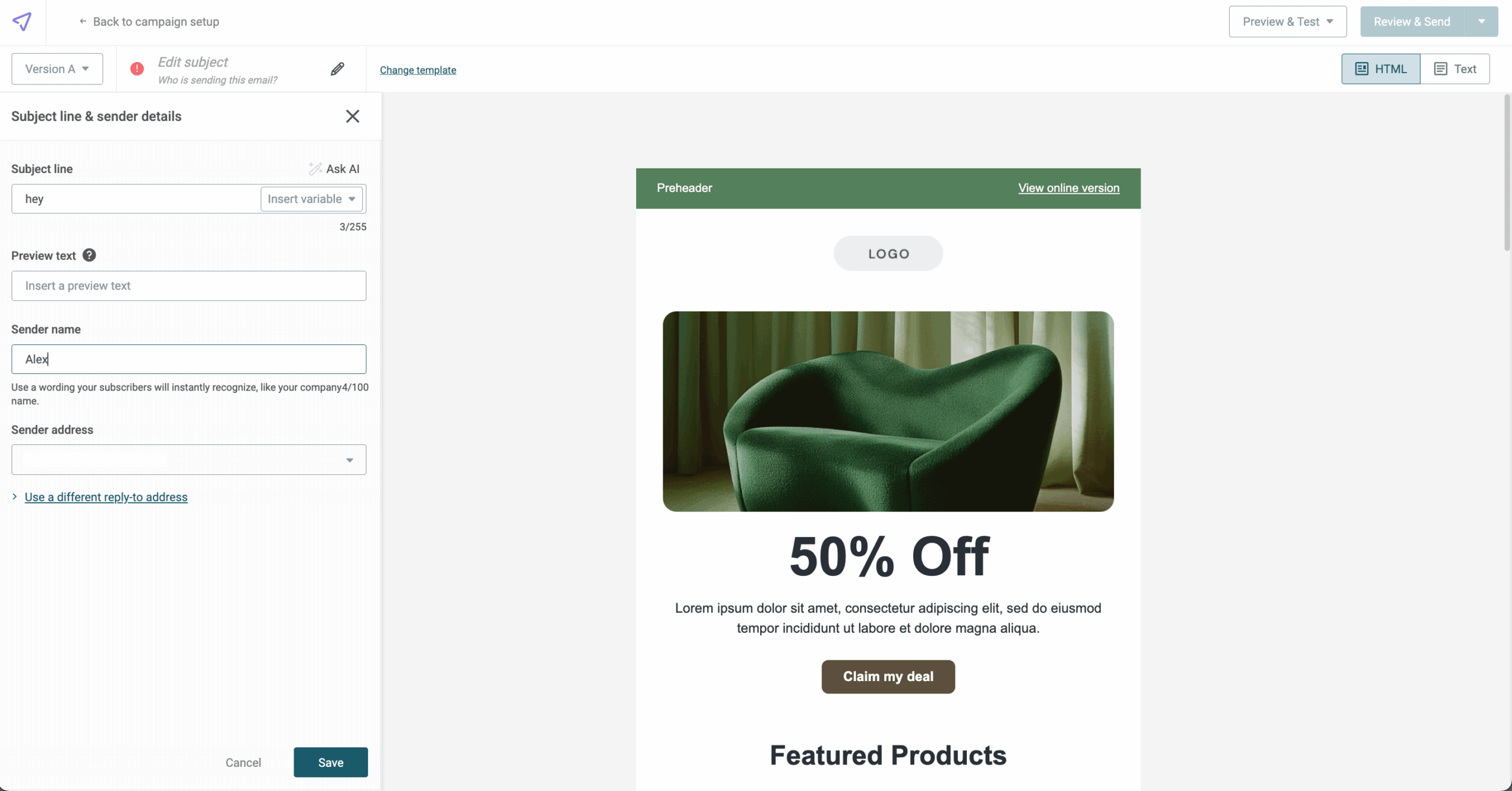
One annoying thing: when you use a Saved Section in a campaign, it doesn’t update if you change the original. Found that out after manually updating footers in twenty campaigns. The HTML code blocks let me add custom code when needed, which gives flexibility that the visual builder alone can’t provide. Overall, it strikes a decent balance between ease of use and customization options.
I usually code in MJML or from scratch, but the pre-made templates work when I’m in a rush. The templating language handles variables and conditionals, so I can build complex personalization right into the template. Pass the data through the API, and you’re done.
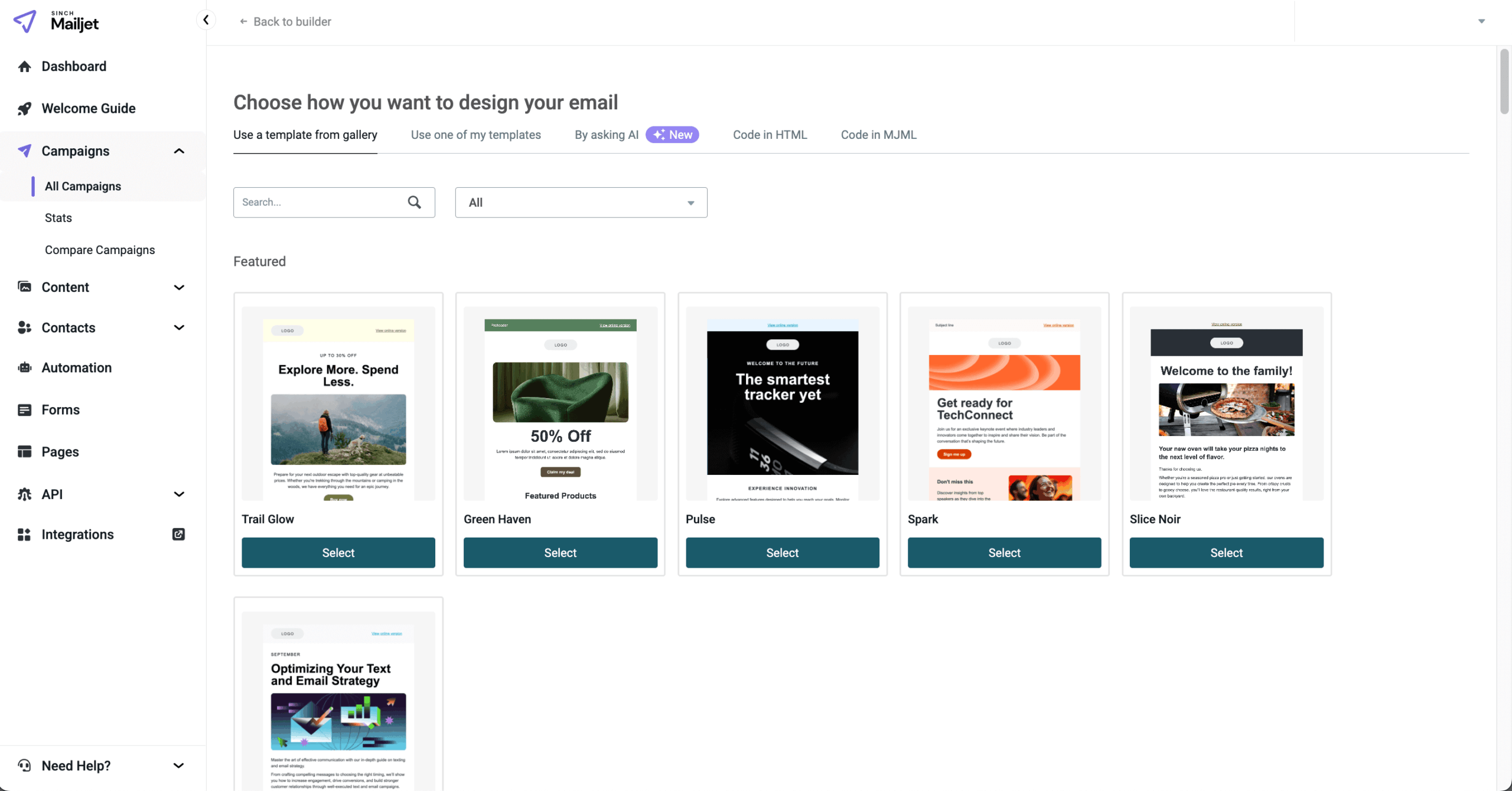
I’ve built product recommendation systems using loops—different subscribers see different products automatically. The Content API makes managing templates across accounts much easier, though some advanced features need pricier plans.
Real-time collaboration feature saves me so much time when working with other team members, it’s ridiculous. Comments on specific blocks mean feedback goes exactly where it needs to. For regulated industries, the publication request workflow creates an audit trail that keeps compliance happy.
MJML makes mobile layouts work without any fiddling—they just do. Dark mode is trickier, though. Had a campaign that looked perfect in regular mode but turned into a disaster in Outlook’s dark mode. Mobile optimization happens automatically with responsive columns and scalable images.
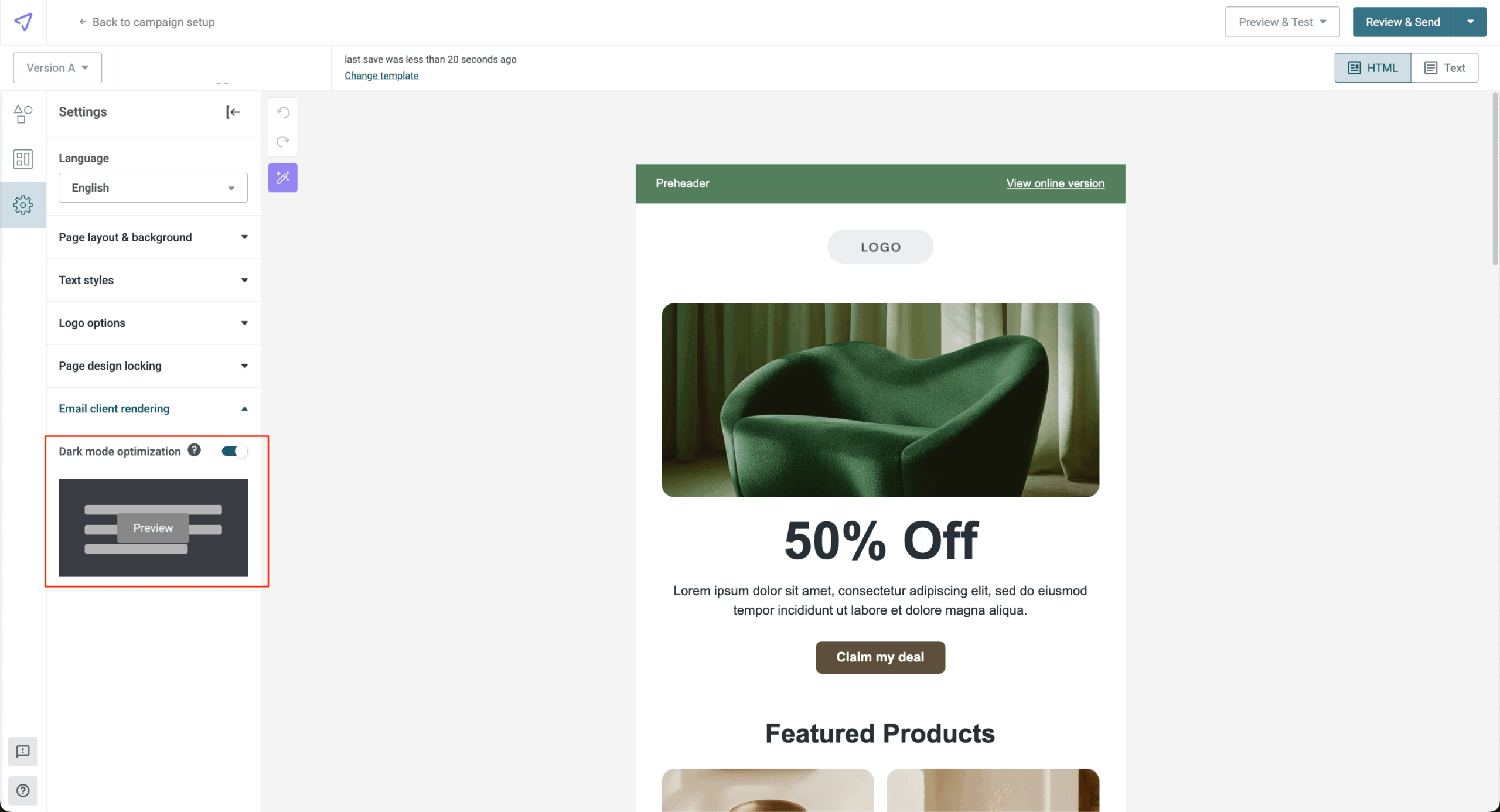
Dark mode requires specific CSS media queries and careful color choices. I’ve learned to design with both modes in mind from the start. Testing across different email clients remains essential despite the automatic optimization. The platform will automatically attempt to optimize for various screen sizes.
The automation builder uses five block types—Event, Timer, Action, Condition, Exit. Simple enough once you get it. I’ve built welcome series, abandoned cart flows, birthday emails, all the usual suspects. The per-node stats show where people drop off, which helps optimization.
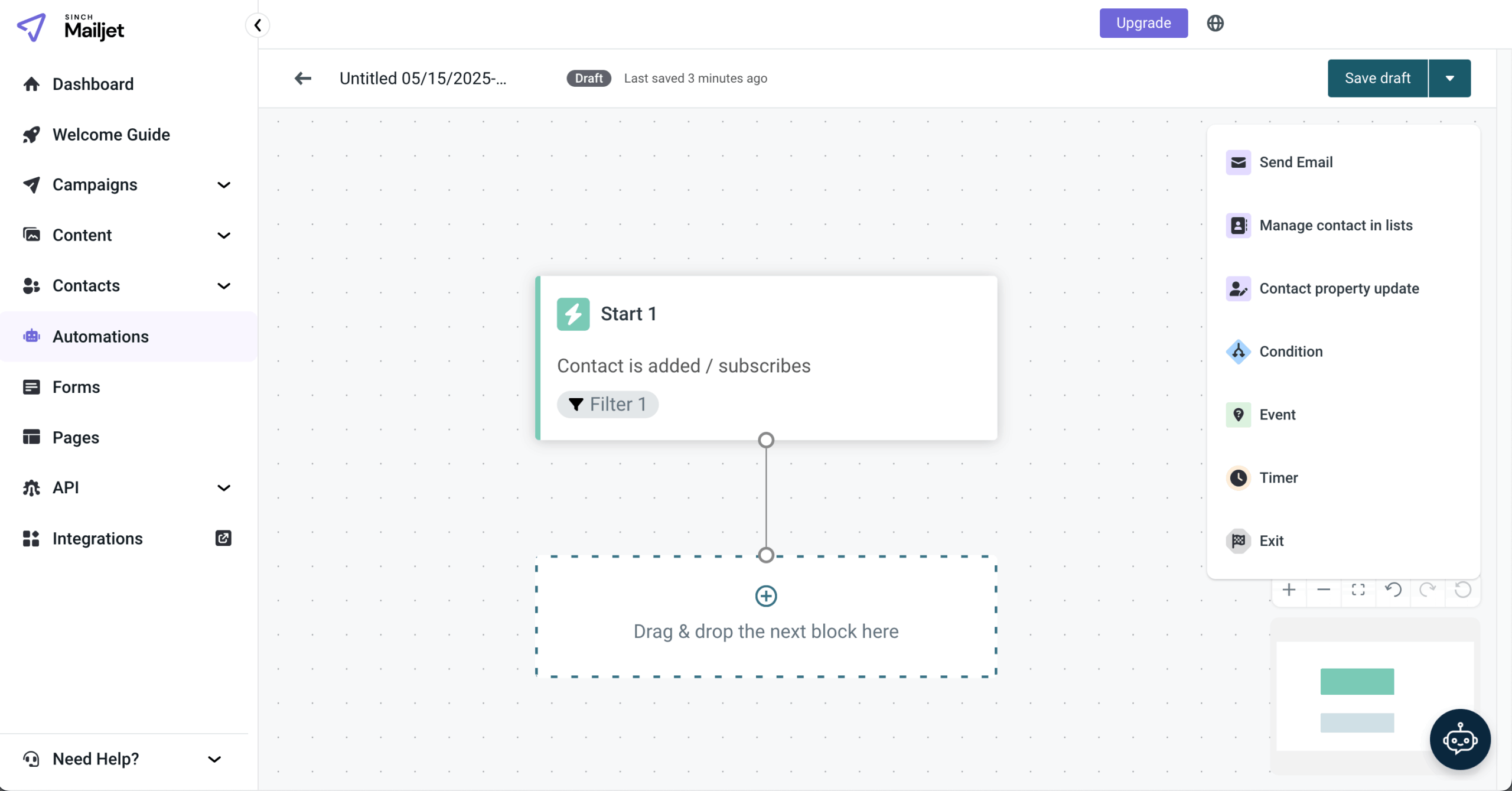
But if you’re in B2B and want a complex lead scoring with multiple decision branches, you’ll need something else. In comparison, Sender handles these complex flows at a lower price point, which I’ve used for similar projects. For basic to moderate automation workflows, though, it works fine. The visual canvas makes it easy to understand flow logic at a glance.
Beyond basic merge tags for names, you can write conditional logic that completely changes email content based on subscriber data. Built a campaign for an online store where customers saw totally different product recommendations based on past purchases.
The AI Assistant has become genuinely useful. When I’m stuck on subject lines, it’ll generate alternatives that sometimes spark better ideas. The chat interface helps create quick copy variations or translations—it handles 21 languages, which saved me from hiring translators for a European campaign.
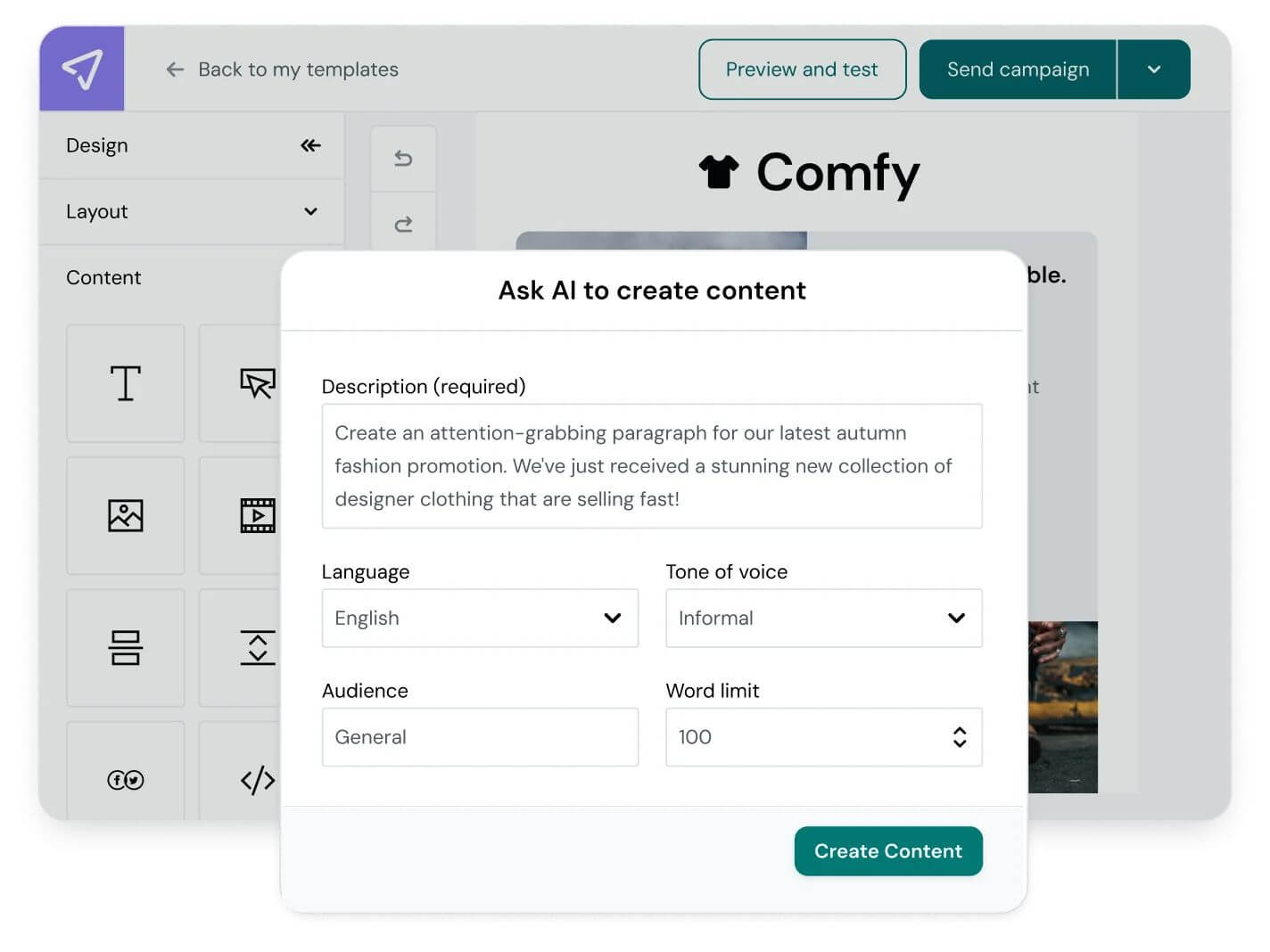
I still edit everything it produces though. It’s good for first drafts or getting unstuck, not final copy. The AI understands context pretty well and maintains a consistent tone across suggestions. Subject line generation particularly helps with A/B testing ideas.
You can also upload brand guidelines, describe the campaign, and it creates a decent starting template. Won’t win design awards, but when you need something professional fast, it works.
The AI understands color schemes and layout preferences pretty well. It generates mobile-responsive designs by default. The templates align with brand guidelines better than generic gallery options.
I’ve gotten creative with the HTML/CSS blocks. Built hamburger menus that work, image carousels for products, hover effects that reveal discount codes. Did a scratch-off effect for a holiday campaign—engagement went way up. Countdown timers from MailTimers work great for sales, though you need external services for them.
Mailjet also mentions AMP in the docs but don’t give you any tools to use it. I tried making AMP emails for in-email surveys—turned into a coding nightmare with no native support. Plus it only works in Gmail and Yahoo anyway.
You get three ways to send: REST API, SMTP relay service, and webhooks for tracking. The v3 API handles bulk sends (up to 100 messages per call), while v3.1 gives detailed feedback for transactional emails but caps at 50. Hit the rate limits and you’ll get HTTP 429 errors—learned to batch properly after that happened a few times.
Webhooks are reliable for tracking everything from opens to bounces. The technical documentation is clear with good examples. Authentication options include API keys and bearer tokens. Error handling is well-designed with descriptive messages.
I’ve connected Mailjet’s transactional API to dozens of apps. The v3.1 endpoint’s detailed feedback helps debug delivery problems. I prefer using stored templates with variables passed through the Email delivery API—cleaner than embedding HTML in code. The webhook events include custom metadata, so you can track emails through entire customer journeys.
Quick tip: handle both success and error responses properly, especially for password resets and other critical emails. Response times are consistently fast, usually under 100ms. The API supports attachments, inline images, and custom headers. Rate limiting is generous enough for most applications. This email tool handles high-volume transactional needs reliably.
Sometimes you just need SMTP. I’ve connected everything from old PHP apps to modern Node.js projects. You can control features through headers—attach templates, toggle tracking, set priority. Having multiple ports (including 2525) helps when firewalls block standard ones.
TLS works on all ports, which security-conscious clients appreciate. The authentication is straightforward with the API key as username and the secret as password. Custom headers let you tag messages for better tracking. SMTP is particularly useful for legacy systems that can’t be easily modified. Performance stays consistent even with high volume.
Good deliverability makes or breaks email marketing. I always start with SPF/DKIM setup—Mailjet’s guide walks through it step-by-step. The webhook error messages tell you exactly why emails bounce, which beats guessing. When a high-volume client got a dedicated IP, the warm-up plan Mailjet provided worked perfectly. We reached full volume in three weeks without problems.
ISP feedback loops help identify issues quickly. The platform maintains good relationships with major email providers. Reputation monitoring tools show trends over time. Consistently following their best practices helps promotional emails reach the inbox.
Mailjet thinks about contacts differently than other platforms. You work with contact management properties and segments rather than traditional lists. Takes some adjustment.
The email verification catches tons of fake addresses before they hurt your reputation. The Campaign Exclusion List is great—blocks marketing emails but allows transactional ones. Perfect for VIPs or people who complained but still need receipts. Import processes handle large files smoothly.
Custom properties let you store any contact details you need. Segmentation based on behavior and properties works well for targeting. The suppression management keeps you compliant with regulations.
The form builder creates double opt-in flows that keep GDPR auditors happy. I customize them with brand colors and usually embed them with the WordPress plugin. Always add CAPTCHA on your own, though—the forms don’t include bot protection.
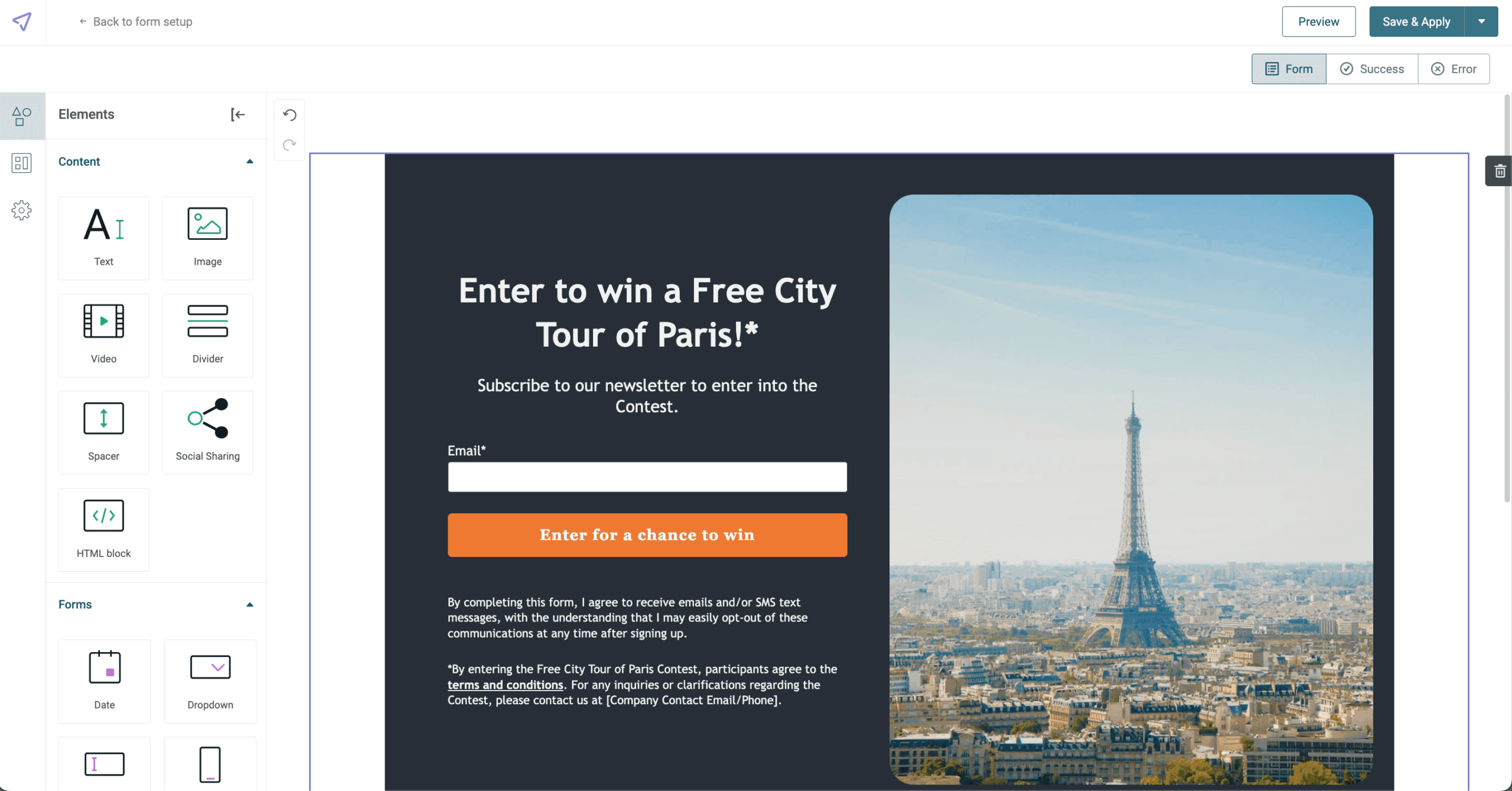
The confirmation emails stay on-brand, which users appreciate. Forms support multiple fields and custom properties. The subscription process is transparent to users. Confirmation pages are customizable, too. Contact field data is fed to the system automatically.
Integration with websites is straightforward through embed codes. The forms work well on mobile devices without extra configuration. Managing your contact list starts here with proper validation.
Bulk validation has cleaned up some terrible lists for me. Once got handed a list that was 40% garbage—Mailjet identified all the bad addresses before we sent anything. For new signups, their validation API catches typos in real-time.
The validation checks syntax, domain existence, and mailbox verification. Results export easily for cleanup workflows. Pricing for bulk validation is reasonable compared to standalone services. The API integration prevents bad data from entering your system. Regular validation maintains list health over time.
Managing subscribers has its quirks. You can unsubscribe people from specific lists while keeping them eligible for transactional emails—super useful. The API makes bulk operations faster than clicking through the interface. GDPR features include proper deletion for “right to be forgotten” requests. Global unsubscribe flags help maintain a master suppression list.
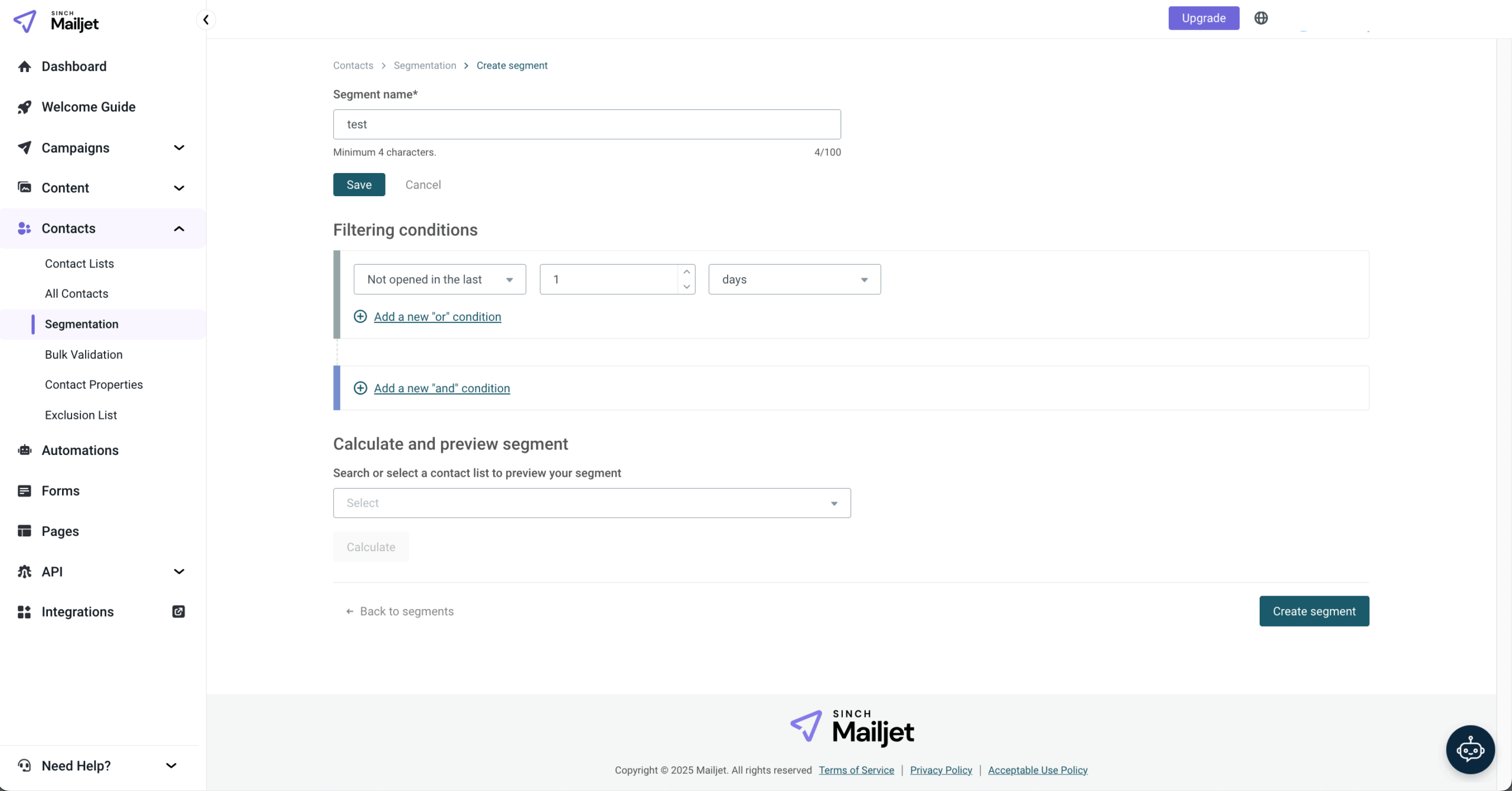
The integration library is… limited. The WordPress plugin is great—I love seeing email stats in their dashboard. WooCommerce integration handles basic e-commerce. But compared to competitors with hundreds of integrations, it feels thin. In contrast, Sender offers more native e-commerce connections, so I’m not constantly building Zapier workarounds.
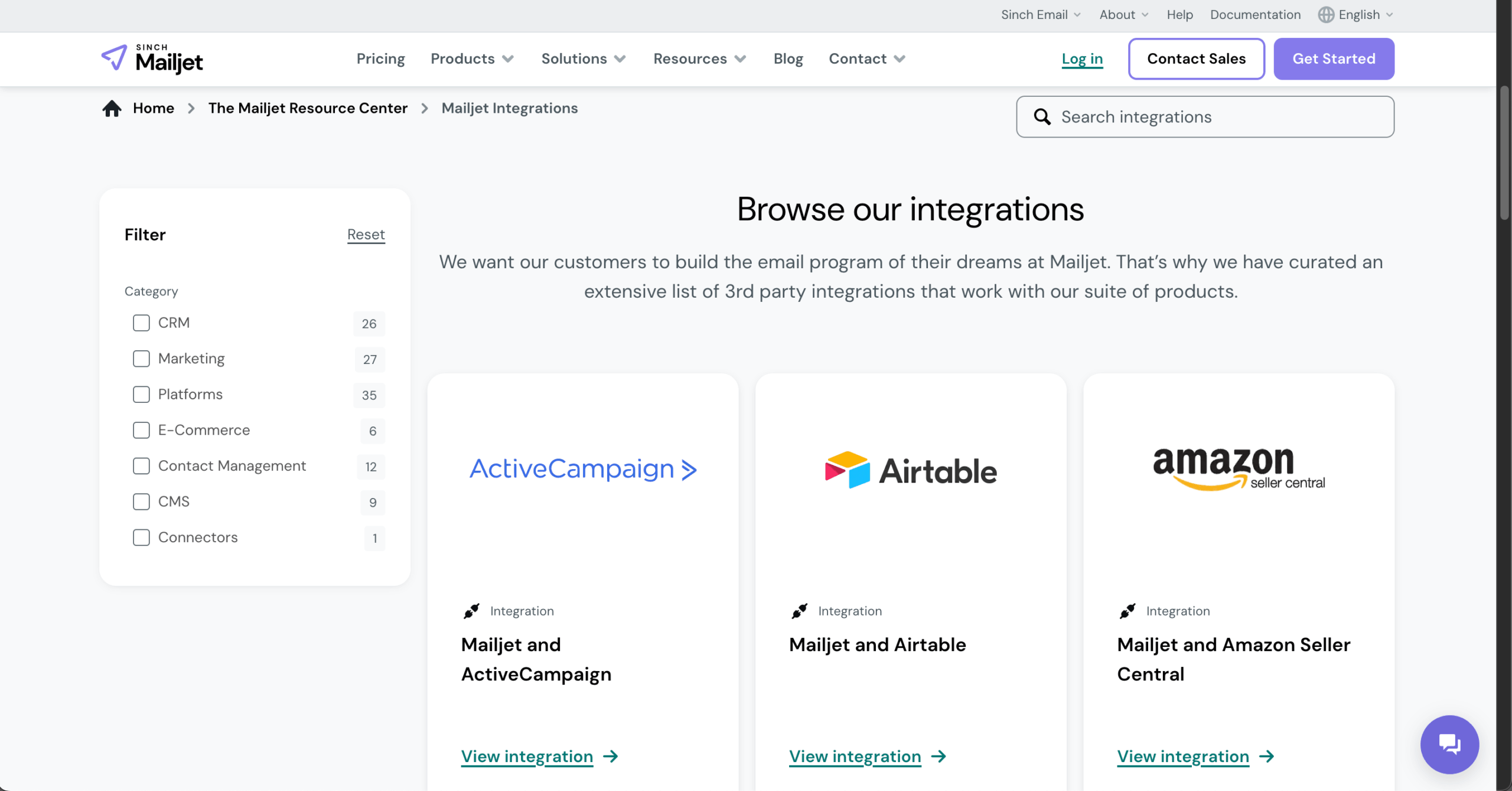
Salesforce integration exists but doesn’t do much. I’m constantly building workarounds, which adds time to projects. The lack of native Shopify integration is particularly frustrating. Google Analytics works through UTM parameters. Microsoft Dynamics has basic sync capabilities. These are some of Mailjet’s core features but they need expansion.
Zapier technically connects Mailjet to thousands of apps, but I’m managing way too many Zaps across my accounts. Each one adds delay and another failure point. Shopify integration through Zapier works but feels fragile. Had Zaps randomly stop working, causing missed emails and angry clients.
Real-time updates spoiled me—I watch metrics change during sends and catch problems immediately. Click Maps show exactly where people click, revealing patterns I wouldn’t notice otherwise. Campaign Comparison proves what works for skeptical clients. Bot filtering is decent, though some real opens get filtered too.
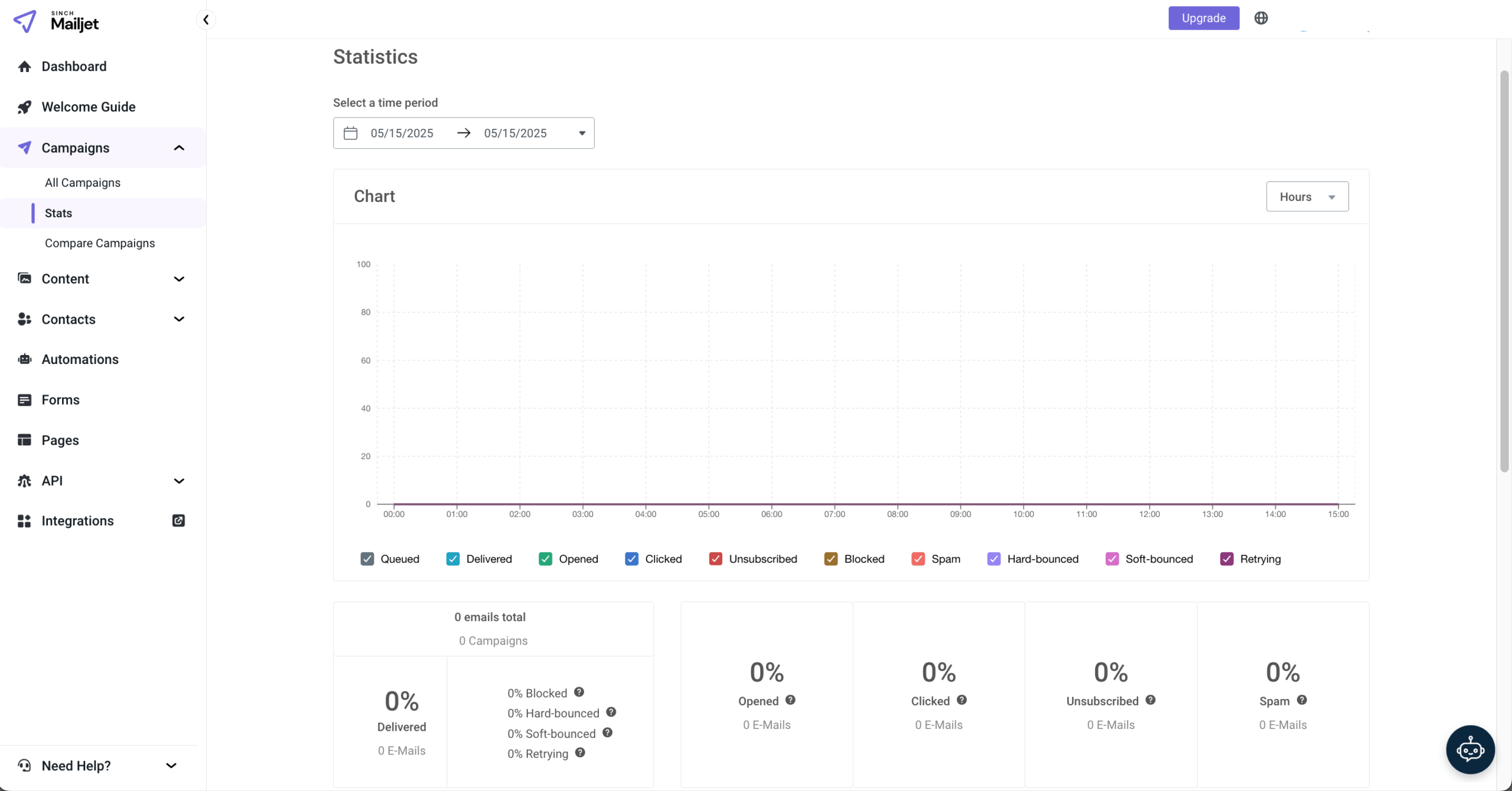
Geographic distribution shows where your audience engages most. Time-based reports reveal optimal sending patterns. Device and client breakdowns help optimize designs. Engagement trends over time guide strategy adjustments. Export options make client reporting easier. The basic statistics cover essentials, while advanced statistics require higher plans.
Detailed bounce categories with ISP error codes tell you what went wrong. Emails might be blocked because of one specific phrase—the error messages pointed right to it. Message logs showing individual email journeys settle “I never got that” disputes.
Support varies but generally helps when needed. The 24/7 tickets saved me during weekend emergencies, though responses aren’t always fast. Live chat (on higher plans) usually gets me someone knowledgeable. European hours get faster responses—makes sense since they’re French.
For tricky API problems, I’ve been escalated to people who really know the system. Be specific in your first message to skip basic troubleshooting. Documentation often answers questions before you need support. The community forum has helpful users sharing solutions, too.
Even novice users will find that email support handles complex issues well. Phone and chat support is limited to business hours and you get it only in Premium past 50k subscribers and Custom. Priority support comes with higher-tier plans, starting at Premium.
Free
Essential plan
Premium plan
$0 Forever free
From $17/month
From $27/month
Two years in, out of all the features, the collaboration continues to impress me. It’s not marketing fluff—it genuinely changes how teams work. Watching three people edit a campaign simultaneously while adding contextual comments beats endless revision emails. The pricing stays predictable as the email list grows. The free tier works for real campaigns, not just playing around.
Deliverability stays consistent. The platform handles marketing blasts and critical transactional emails equally well, so you don’t need multiple providers. Set it up once, and personalization happens without touching anything.
The API documentation makes sense and includes examples that work. Integration is straightforward even for complex scenarios.
The automation builder handles basics but nothing fancy. Creative teams bump into template limitations quickly. No CRM functionality means constant data syncing between systems. Creating complex behavioral segments takes way too much work. Basic property segments are fine, but anything sophisticated requires workarounds that shouldn’t be necessary.
Depending on Zapier for integrations feels shaky. Too many failure points, too much latency. Analytics cover basics but not much else. No cohort analysis, limited attribution, missing revenue tracking. You’ll need other tools for serious optimization work.
Best For
Not Recommended For
Small Businesses & Startups
Mailjet’s affordability, simplicity, and built-in collaboration tools suit teams with lean resources.
Enterprise Marketing Teams
Lacks robust automation, CRM integration, and role-based access controls needed at scale.
Freelancers & Consultants
Its easy setup and dynamic content tools are ideal for managing campaigns across a small client base.
Ecommerce Brands with Large Catalogs
Limited segmentation and product-specific triggers hinder deep behavioral targeting.
Agencies Needing Collaboration
Real-time editing allows teams to streamline client feedback and email approval processes.
Data-Driven Marketers
Reporting lacks advanced attribution and funnel insights for performance optimization.
Small-to-medium-sized businesses and startups do well with Mailjet. I’ve seen bootstrapped companies start free and scale smoothly. The interface makes sense quickly—founders can run campaigns themselves after initial setup. Watched one startup grow from zero to 50,000 subscribers over two years, and Mailjet handled it fine.
Freelancers and consultants managing multiple clients appreciate the simplicity. I juggle eight different accounts, and the clean interface makes switching between them painless. Dynamic content delivers sophisticated-looking campaigns without complicated setup.
International businesses need the GDPR compliance and language support. I’ve deployed Mailjet across Europe where privacy laws are strict. The compliance tools pass legal reviews that rejected other platforms.
If you’re doing sophisticated marketing automation, you need to look at Mailjet alternatives. Complex lead nurturing with behavioral triggers and branching? Mailjet can’t handle it. The workflows work for basics but lack what advanced strategies require.
Ecommerce businesses with large catalogs struggle. Without native ecommerce integrations and product recommendation engines, you’re constantly building workarounds. I send serious online retailers to Klaviyo or Omnisend now.
Data-driven teams find analytics frustrating. Need cohort analysis, multi-touch attribution, or predictive analytics? You won’t find them here.
Companies deep in specific CRM tools ecosystems should use native solutions. While I can connect Mailjet to Salesforce or HubSpot, it’s never smooth. Constant data syncing becomes exhausting.
Across recent G2 reviews, users praise Mailjet as cost-effective, reliable, and easy to use—especially the intuitive editor, quick template creation, and developer-friendly APIs. Collaboration features also get credit for speeding up production.
On the downside, some reviewers say pricing can feel higher than competitors at scale and want deeper template variety, native landing pages, stronger integrations, and more granular stats filtering/reporting. Overall: a straightforward, API-savvy platform that handles core email well, though larger marketing teams may outgrow the built-ins for advanced analytics and templating.
Two recent Trustpilot reviews highlight fast, friendly support and strong value for money. One reviewer called Mailjet the best ESP for the price after quick, effective resolutions. Another new user described support as “very swift and kind” and found the tool affordable and straightforward.
In contrast, a 1-star review reports an unexpected account block after sending from an unverified address, with little warning or feedback, prompting a switch to other providers. Takeaway: excellent support and pricing, but compliance checks are strict—verify setup before sending.
Two Reddit threads paint Mailjet as dependable for small-volume sending. One reviewer uses the free plan alongside self-hosted inbound and reports steady reliability with only occasional spam routing despite proper authentication. Another runs Mailjet for transactional email, citing good deliverability and a generous free tier (~6,000 emails/month).
As for negative reviews? A critical post describes Gmail delays/non-delivery; support advised setting a custom return-path via CNAME, which improved outcomes. Bottom line: solid for light transactional/marketing sends, but Gmail can be finicky unless DNS/auth (SPF, DKIM, return-path) are carefully configured.
Two years of using Mailjet taught me it does exactly what most small to medium businesses need—reliable email delivery with collaboration features that make a real difference. Sure, I hit walls with automation limits and wish for better integrations, but the straightforward pricing, consistent deliverability, and that real-time editing keep me recommending it.
You’ll need Zapier for some connections and external tools for fancy analytics, but for core email marketing plus transactional support? It’s one of the most practical choices out there.
Mailjet vs Sender
Mailjet’s collaboration is unmatched, but Sender wins for growing businesses. Sender’s automation handles complex flows Mailjet can’t touch. Built-in SMS in Sender matters for omnichannel campaigns. Pricing scales better too—saved hundreds monthly by switching. But if collaboration is your main thing, stick with Mailjet.
Mailjet vs Mailchimp
This comparison comes up constantly. Mailjet wins on collaboration and developer features—cleaner API, better real-time editing. But Mailchimp’s ecosystem is huge. When others need deep ecommerce integration or advanced automation, I point them to Mailchimp despite higher costs. Mailchimp’s template variety wins for design-focused brands. Pick based on what matters: collaboration and cost (Mailjet) or features and integrations (Mailchimp).
Mailjet vs Mailgun
Different tools for different jobs. I use both. Mailjet for marketers who need campaigns plus some transactional capability. Mailgun for developers building applications that send email programmatically. Mailgun’s logs and debugging beat Mailjet for troubleshooting, but there’s no campaign builder. Need marketing features? Mailjet. Only need transactional email with maximum control? Mailgun.
Mailjet SendGrid
SendGrid is built for developers handling transactional email at scale, while Mailjet tries to balance transactional and marketing features with usability. Mailjet gives you a more user-friendly campaign builder, team editing, and content tools made for marketing teams. While it can’t match SendGrid’s deep customization, it’s way more accessible for marketers running promotions, newsletters, or basic automations.
Hit these limits enough to know them well. Per-API-key rate limiting gives you HTTP 429 when exceeded—plan your batching. I use v3 for bulk marketing (up to 100 messages per call) and v3.1 for transactional where I need detailed feedback. Delivery isn’t instant—Mailjet paces sends for reputation, which is good. Large campaigns take hours sometimes. Use Email Priority Management for urgent transactional emails. Implement exponential backoff for retries when rate limited.
Yes, on Premium plans (100k+ emails/month). Set up several for high-volume clients. Support helps with warm-up—follow their schedule exactly. Only recommend dedicated IPs above 150k monthly emails. Below that, shared pool often works better. Keep marketing and transactional on separate IPs if possible. Warning: downgrade and you lose the IP plus its reputation. Plan carefully.
It’s decent at both, excellent at neither. Pure marketing? Specialized platforms offer more. Pure transactional? Postmark or Mailgun give better developer tools. But if you need both Mailjet’s unified approach simplifies things. I run welcome series alongside password resets, cart emails with order confirmations, all from one place. Works best for businesses needing 70% marketing, 30% transactional, with moderate complexity.
